The Phenomenon of Fluorescence
The reason that palo azul is blue is because of the phenomenon of fluorescence, which means that it can absorb high energy light and transform it into a visible blue light that's incredible to see! Palo azul is fluorescent because it contains flavonoids, which are polyphenols that plants produce in order to defend themselves from excessive ultraviolet radiation, oxidative stress, fungi, and other pathogens. These polyphenols are also what make palo azul tea antioxidant & anti-inflammatory, so they're responsible for most of palo azul tea's beneficial properties.
Although the phenomenon of fluorescence is rare, recent studies are showing that it occurs naturally in many plants, flowers and animals. It just so happens that palo azul is the only plant that produces a fluorescent tea! We actually wrote an article about Fluorescence in Nature where you can see some incredible pictures of fluorescent plants, animals, and even rocks!

©2017 Craig Burrows
What is fluorescence?
Fluorescence is commonly defined as the emission of light by a substance which has absorbed light. For example, The Aurora Borealis, is able to absorb energy from outer space through Earth’s magnetic field. It captures energy particles from the Sun and when these particles reach Earth’s magnetic field, they strike the atoms with such force that its electrons are excited into a higher energy state.
This article beautifully describes that “it's this microscopic turmoil, miles above the Earth's surface, that gives the northern lights their eerie glow.”

Why exactly is palo azul able fluoresce?
A study published in 2021 mentioned that "the blue light emission from palo azul was subsequently ascribed to its rich content in Coatline B, a rare C-glucosyl-α-hydroxydihydrochalcone.
According to a another study "the intense blue fluorescence of the infusion of Lignum nephriticum (palo azul), first observed in the sixteenth century, is due to a novel four-ring tetrahydromethanobenzofuro[2,3-d]oxacine which is not present in the plant but is the end product of an unusual, very efficient iterative spontaneous oxidation of at least one of the tree’s flavonoids.”

This is very interesting, because this means that palo azul's fluorescence is not actually present in the plant itself. We were curious about this...so we took a picture of some palo azul wood under UV light and it actually produces a green fluorescence!
This essentially means that palo azul’s blue fluorescence only occurs when its flavonoids react with water. Interestingly, flavonoids are also responsible for most of palo azul's beneficial properties!
The researchers from this same study found that palo azul “does not contain a large amount of an easily water-soluble blue-fluorescent dye.” In order to solve this paradox, they extracted two different water-soluble compounds called “glucosyldihydrochalcones: coatline B (1) and coatline A (3).”
They found that “at room temperature and in slightly alkaline (pH ∼7.5) water solution, coatline B (1) undergoes a fast, irreversible reaction giving rise to a strongly blue-emitting compound with 100% yield, matlaline, the fluorophore of the long-sought L. nephriticum.”

Heinrich-Boll-Stiftung, CC BY-SA 2.0, via Wikimedia Commons
In other words, when palo azul is placed in slightly alkaline water, it triggers a chemical reaction in its water-soluble (non-fluorescent) compounds which forms a (fluorescent) compound called matlaline.
100% yield refers to the quantum yield of the fluorescence, which is defined as the ratio of the number of photons emitted to the number of photons absorbed. Basically, the higher the yield, the more efficiently a “fluorophore converts the excitation of light into fluorescence” and leads to a more intense fluorescence.

This same study emphasizes that “the fluorescence intensity of the aqueous solution depends strongly on pH, as noticed also in historical times by Kircher and Boyle.” In fact, the article The Fluorescence Foundation: A Short History of Fluorescence, mentions that Robert Boyle “discovered that addition of acid abolished the color and that addition of alkali brought it back.” So...if you want your palo azul to look blue, make sure to use alkaline water!
Another study corroborates the findings from this study which found that “the long-sought blue emitting compound of L. nephriticum is a Coatline B reaction product, which is formed in slightly alkaline water solution.” The researchers from this study found another fluorescent compound in palo azul called formononetin, but they mention that “formononetin cannot by itself account for the fluorescence.”

This study mentioned that “7-hydroxy-2’,4’,5’-trimethoxyisoflavone was isolated as the principal fluorescent phenolic constituent of the heartwood.” Another study found that 5 different fractions in palo azul showed fluorescence! This is what the researchers said: “Nine fractions were obtained by chromatography and five of them showed fluorescence. Fluorescence of extracts from Eysenhardtia polystachya (palo azul) is due to more than one component and we suggest that could be other hydrochalcones for which we present possible structures.”
Now you can see why as this 2007 article concludes, this “scholarly discussion over a 400 years-old mystery of science, attracted the keen interest of Kircher, Grimaldi, Boyle, Newton, Priestley, and many other classic scientists.”
A Brief History of Fluorescence

An article titled "Early History of Solution Fluorescence: The Lignum nephriticum of Nicolás Monardes", starts off our story by mentioning that “the history of molecular fluorescence is closely associated with the emission from plant extracts. N. Monardes, in his Historia Medicinal (Seville, 1565), was the first to describe the blue opalescence of the water infusion of the wood of a Mexican tree used to treat kidney ailments.”
These strange optical properties were also investigated by Athanasius Kircher, Robert Boyle, Isaac Newton, Alexander Graham Bell and many other scientists in the ensuing centuries.

However, it was almost 300 years later that George G. Stokes was credited as being the first scientist to correctly describe the phenomenon of fluorescence in 1852. The previously mentioned article states that Stokes’ “observations were based on the emission of quinine sulphate solution, because in Europe the wood of Lignum nephriticum (palo azul) was no longer available and its botanic origin was unknown.”
This article also mentions that Spanish missionaries “compiled information on the Aztec culture” and their findings indicate that “pre-hispanic Indian doctors had already noticed the blue color of the infusion of coatli (palo azul), a wood used to treat urinary diseases.”

Stokes was also the first to introduce the term “fluorescence” and the first to “correctly identify fluorescence as an emission process, due to light absorption, and taking place at a frequency lower that the exciting one.” Surprisingly, Stokes never wrote about “Lignum Nephricitum (palo azul), which had been for centuries the best-known source of fluorescent solutions.”
In fact, this property was so well known in lignum nephricitum (palo azul) that it gave it a sort of eminence. An article mentions that “cups made from lignum nephriticum were given as gifts to royalty.” Moreover, Athanasius Kircher himself presented a cup of palo azul to the Holy Roman Emperor, Ferdinand III!

Athanasius Kircher was considered by many to be the father of fluorescence and he wrote a book in 1646 called Ars Magna Lucis et Umbrae, in which he described his observation of palo azul’s fluorescence. He wrote that “light passing through an aqueous infusion of this wood appeared more yellow while light reflected from the solution appeared blue.”
He also wrote a more detailed description in his book:
“The wood of the tree thus described, when made into a cup, tinges water when poured into it at first a deep blue, the color of a Bugloss flower; and the longer the water stands in it the deeper the color it assumes. If then the water is poured into a glass globe and held against the light, no vestige of the blue color will be seen, but it will appear to observers like pure clean spring water, limpid and clear. But if you move this glass phial toward a more shady place the liquid will assume a most delightful greenness, and if to a still more shady place, a reddish color; and thus it will change color in a marvelous way according to the nature of its background. In the dark, however, or in an opaque vase, it will once more assume its blue color.”

Swiss botanist Johann Bauhin also described palo azul in his work Historia plantarum universalis. He observed the following:
“When water was poured into the cup with the wood shavings, the water shortly turned into a wonderful blue and yellow color, and when held up against the light beautifully resembled the varying color of the opal, giving forth reflections, as in that gem, of fiery yellow, bright red, glowing purple, and sea green most wonderful to behold."

Next up, you may have heard of him...his name is Isaac Newton and he put forth the Laws of Motion and the Universal Law of Gravitation. Newton wrote an unpublished manuscript in 1665 titled “Of Colors”, in which he described his observations about palo azul:

© Cambridge University Library, CC BY-NC 3.0
“The rays reflected from Leafe Gold are yellow but then transmitted are blew, as appears by holding a leafe of gold twixt your eye & a candle.”“Lignum Nephriticum (palo azul) sliced & about a handfull infused in 3 or 4 pints of faire water for a night the liquid (looked on in a cleare violl) reflects blew rays & transmits yellow ones. And if the liquid being too much impregnated appeares (when looked through) of a darke red it may be diluted with faire water till it appeare of a Golden Colour.”
We know, that’s a little hard to read…but fortunately, in “The Optical Papers of Isaac Newton”, we have a more easily understood description:
"When I looked at the facing side of rather thick plates of very clear glass (such as those used to make telescopes), I saw blue reflected, and when I looked through, I saw yellow transmitted. It appeared bluest, however, when it was illuminated with a beam admitted into a darkened room and spread out by a concave lens, so that the color would not be drowned out by too much light. This however does not always happen (for instance, in the same infusion of lignum nephricitum when the blue color is destroyed by acidic salts).”
* This is Newton's illustration for this experiment

The Optical Papers of Isaac Newton: Volume 1, The Optical Lectures 1670-1672
The astronomer Fredrick W. Herschel, who is credited with the discovery of Uranus... was also reportedly the first to observe fluorescence in a quinine solution! Herschel wrote the following about palo azul's fluorescence: “I write from recollection of an experiment made nearly 20 years ago, and which I cannot repeat for want of a specimen of the wood.” In another article, Herschel's recollection of palo azul's fluorescence was described as a “beautiful celestial blue color."

Safford, William Edwin, Public domain, via Wikimedia Commons
Finally, in 1914 Edwin Safford “succeeded in disentangling the botanic problem and identified the species which produced the Mexican LN as Eysenhardtia polystachya” and thus, the true source of the fluorescent lignum nephricitum (palo azul) was found. Safford presented the wood to Dr. Alexander Graham Bell in 1915 and this was his description of the event:
“Specimens of the infusions when exhibited by ordinary electric light failed to show fluorescence; but afterwards, when held in the rays of an arc light the liquid glowed with intense blue which illuminated the faces of those standing nearby."
How Does Fluorescence Work?
When light hits an object, it can do one of 3 things: Reflection, transmission or absorption.
- Reflection: The reflected wavelengths are what we see and make up the object's color.
- Transmission: The light passes through an object, such as water.
- Absorption: Lastly, fluorescence occurs with absorption. This phenomenon essentially gives us access to colors which are normally invisible to us. When we see fluorescence, we’re seeing wavelengths of higher energy in the electromagnetic spectrum (such as ultra-violet) which are invisible to the human eye.

What happens in fluorescence is that light (electromagnetic radiation) is absorbed by the atoms of compounds which have the ability to absorb light, and this additional energy excites the electrons into a higher energy level. These electrons then lose a bit of the energy they absorbed due to vibrations of molecules. Finally, the excited electrons return to their original state and they emit the light they had absorbed.
Since energy cannot be created or destroyed, and some energy was lost in the form of heat due to molecular vibrations, the energy of the light that is emitted is lower than what was originally absorbed. The energy of light depends on the size of its wavelength, and in this diagram you can see the energy levels of the electromagnetic spectrum (light).

Example: If you have a yellow fluorescent substance, and you shine a higher energy light such as ultraviolet, violet, blue, or green onto it...it will emit yellow fluorescence. But if you shine a red light into it, it emits no fluorescence because red light has a longer wavelength and thus, a lower energy.
Reflection vs. Emission of Light

In case you were wondering what’s the difference between the blue light that palo azul emits through fluorescence and regular blue color such as that of butterfly pea tea...the answer lies in distinguishing between light that is reflected or emitted.
For Example: Butterfly pea tea is blue because it absorbs the wavelengths of all colors except blue...so it reflects blue light. On the other hand, palo azul tea is blue because it actually emits blue light through the phenomenon of fluorescence! 😮
The moon reflects light, meaning that it doesn’t generate light; light simply bounces off of it and that’s the light we see. On the other hand, the sun emits light, because the energy it generates from nuclear fusion causes electrons on its atoms to rise and fall in energy levels and release photons (light).
This is why the sun is so much brighter than the moon and we can actually look at the moon without hurting our eyes. On that note, although the stars in the night sky do emit light, they are so far away that we can look directly at them without hurting our eyes.

Pretty much everything we see is reflected light, except for light bulbs, sunlight, fire, lightning, and other hot things. In fact, an article mentions that “for visible light to be emitted by an object, its temperature has to be just over 100 Kelvin, which is over 700°F!”
How can we tell if an object emits or reflects light? Scientists can determine the difference by “comparing temperature with the wavelength of light associated with it.” For example, a blue flower doesn’t emit blue light...in order for it to emit blue light it would have to be over 800ºF!

* Here’s an interesting fact though! Humans and animals do emit some infrared light because of body heat, but this light can only be seen with special equipment; such as night vision goggles.
Other Fluorescent Phenomenons

Since all you need to create fluorescence is energy to excite the electrons into a higher state... is it possible to excite electrons without light? Yes! In fact, this is how glowsticks work. They use chemical reactions instead of light to excite electrons. Glowsticks are actually phosphorescent though.
What’s the difference between fluorescence and phosphorescence?
They are both pretty similar, but phosphorescence is a delayed emission of light after the absorption takes place. Remember when we mentioned that fluorescence occurs when electrons are excited into a higher energy state and emit light as they fall back down to their ground state?
In phosphorescence, there is a transition state before the electrons fall back down to their ground state. This means that the decay is not instantaneous and thus, it leads to a slower emission of light

So...if a fluorescent substance and a phosphorescent substance both stop absorbing light at the same time, the fluorescent substance will cease to glow immediately. Whereas the phosphorescent substance will continue to glow for a few seconds. (As you can see in this video)
There’s also a very special range of fluorescent compounds which have a property called triboluminescence, which are like crystals, and when you grind them or smash them, the mechanical energy can be turned into fluorescence!
Remember when we talked about electrons losing a bit of energy due to molecular vibrations? This means that if we can stop or reduce molecular vibrations, we can change the wavelength of light that is emitted and thus, we can change the color fluorescence...right?
This can actually be done in some fluorescent dyes, such as pyridine copper iodide. It normally fluoresces yellow, but when dipped into liquid nitrogen, we can reduce the amount of energy lost as heat and it turns blue instead (a higher energy light). This property of changing fluorescence temperature is called fluorescence thermochromism.
What is fluorescence used for?
Detecting E. coli

A doubt, CC BY-SA 4.0, via Wikimedia Commons
There are specially engineered dyes that fluoresce when they come into contact with E. coli. This can be used to detect toxic levels of fluorescence in water samples simply by shining UV light on them. A highly advanced version of this technique is used in medical diagnostics to identify all sorts of diseases in people.
Black lights

Black lights illuminate ultra-violet light and only the objects which are fluorescent are able to absorb the invisible UV light and emit a lower energy visible light.
Forensics

US Air Force, Public domain, via Wikimedia Commons
We’ve all seen how forensic investigators on movies shine a blacklight onto crime scenes right? This technique can be used to find traces of fluorescent bodily traces such as fingerprints, saliva and blood.
Quantum dots for targeting cancer cells

2017, Effects of extraction solvents on photoluminescent properties of eysenhardtia polystachia and their potential usage as biomarker
Quantum dots are a bright nanomaterial which allow us to take a closer look at the structure of cells and they can be used to target cancer cells. In fact, a 2017 study explored the use of fluorescent “EP (palo azul) nanomaterials for health care applications, specifically for imaging techniques.”
They also found that biocompounds extracted from palo azul known as “nanoparticles (NPs), have interesting properties that could be used to stabilize diverse biomolecules, including dyes.” The researchers mention that the reason they explored the idea of an organic dye such as palo azul was that some fluorescent dyes such as Rhodamine are toxic and were therefore not approved by the FDA.

National Institute of Standards and Technology, Public domain, via Wikimedia Commons
Finally, the researchers conclude the following: “By this method, our novel nanosystem opens the possibilities to obtain sensitive data in a noninvasive manner for biological applications, such as early-stage cancer diagnosis, drug delivery, and pathogen detection.”
In other words, fluorescent particles in palo azul are effective bio-markers for detecting cancer cells and many other applications because they have a stable fluorescence.
Conclusion
In conclusion, we’ve seen that this magical tea has been studied widely for its fluorescence, it’s been given as a royal gift, used as a natural remedy, and it’s nano-particles are being used as bio-markers for detecting and preventing diseases. If all of these applications don’t convince you of palo azul's magic, we honestly don’t know what will. Perhaps this incredible picture of palo azul’s colors will do the job though 😉
Now that you know why palo azul is blue, everytime you see it’s breathtaking colors inside your cup...you will know that those microscopic agitations happening right in your hands are the same phenomenon that give Aurora Borealis its extraordinary beauty and which also amazed Newton, Kircher, Boyle, Bell, and many others.

Sources
Palo azul's scientific and common names: Eysenhardtia polystachya, Cyclolepis genistoides, Lignum nephricitum, kidneywood, kidney tea, palo dulce
(2007) Early History of Solution Fluorescence: The Lignum nephriticum of Nicolás Monardes
(1670-1672) The Optical Papers of Isaac Newton
(2009) Structure and Formation of the Fluorescent Compound of Lignum nephriticum
(1915) Eysenhardtia polystachya, the source of the true Lignum nephriticum mexicanum
(2021) Light and Autofluorescence, Multitasking Features in Living Organisms
(2009) The Fluorescence Foundation: A Short History of Fluorescence
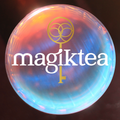

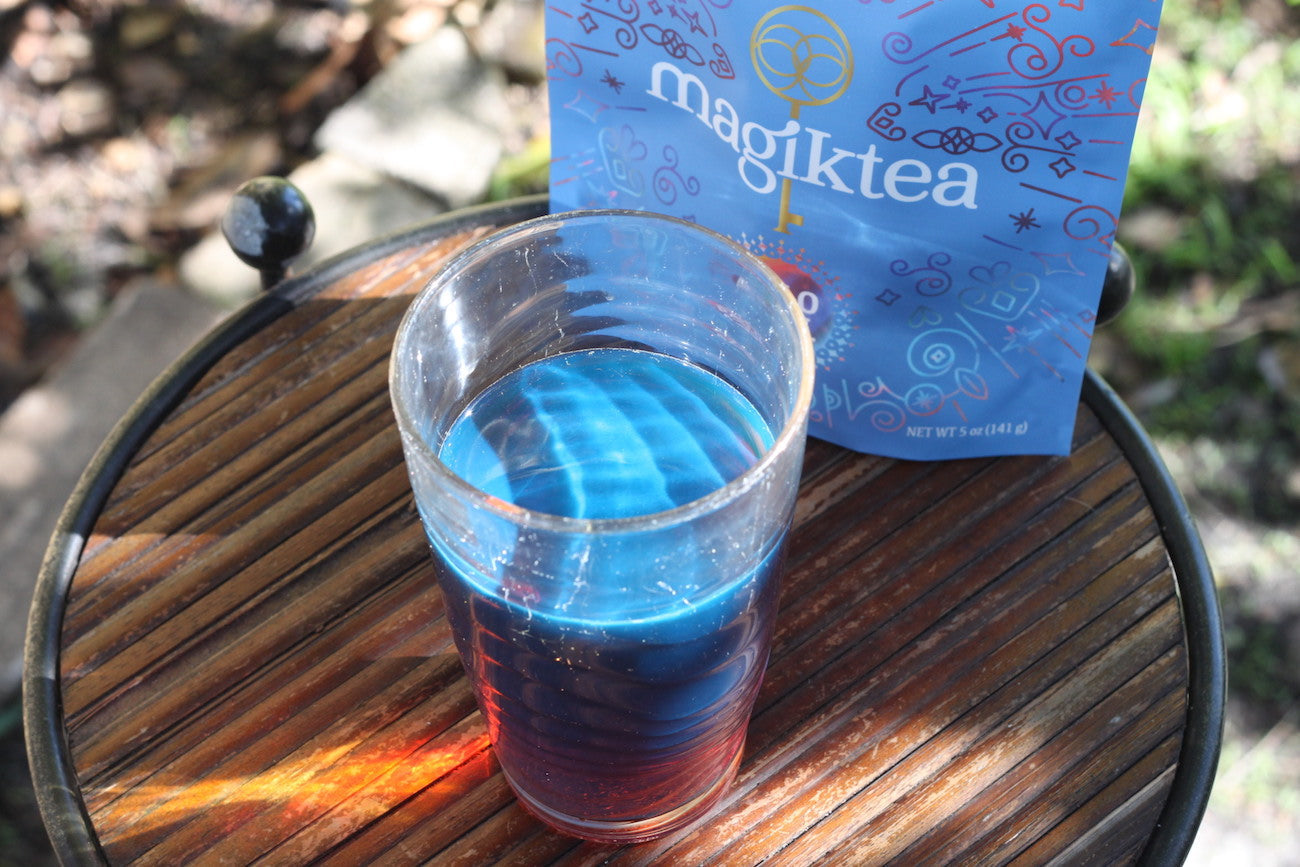



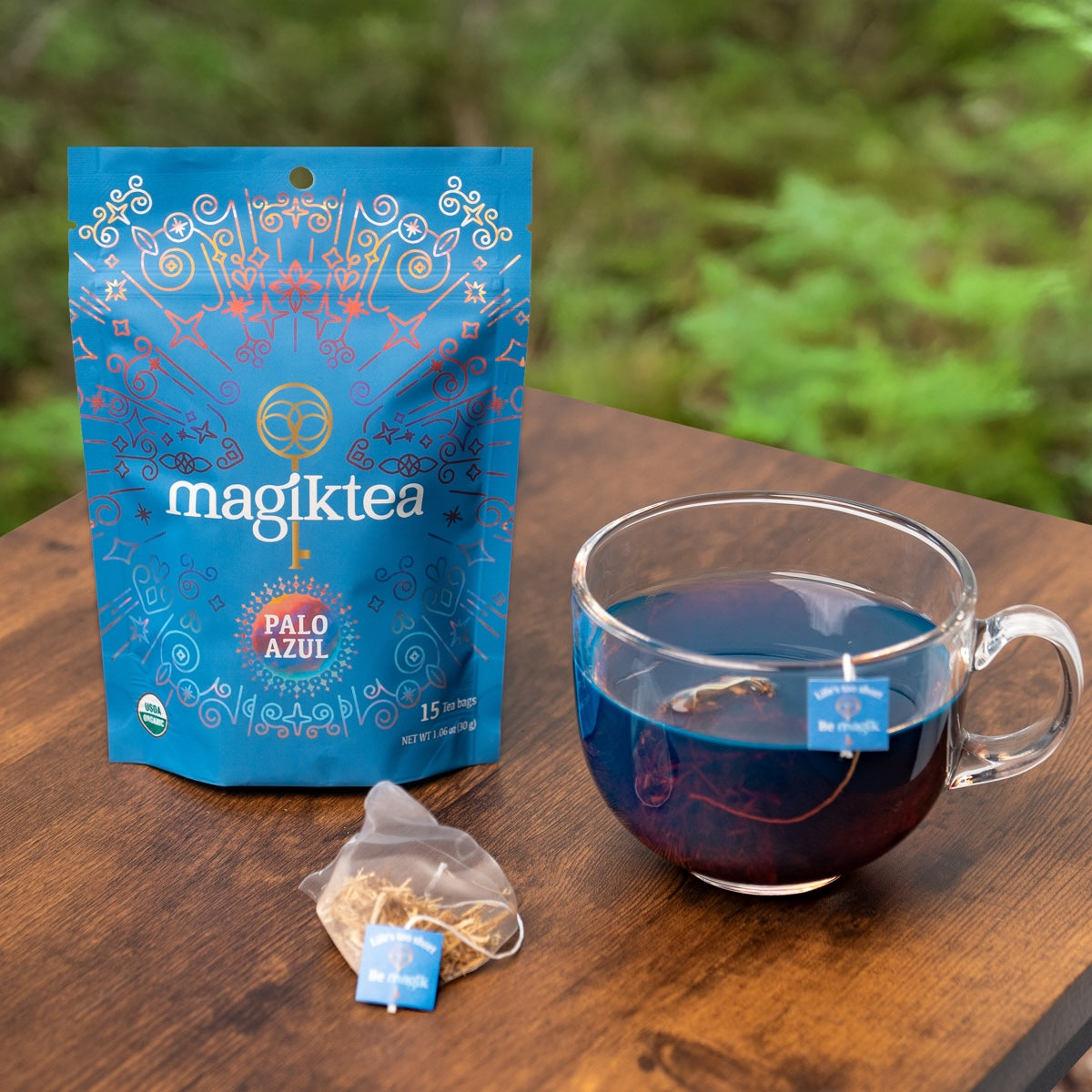


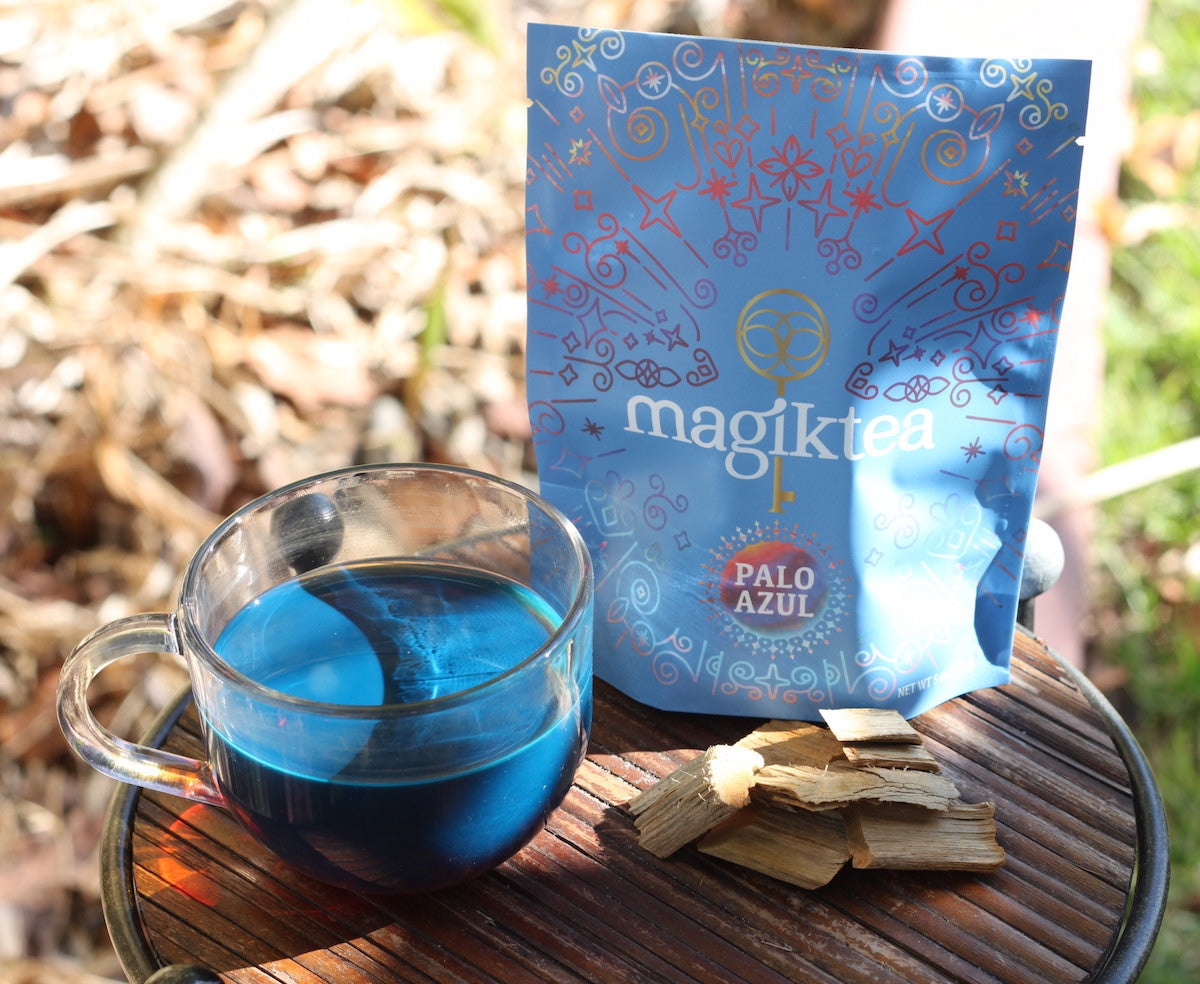
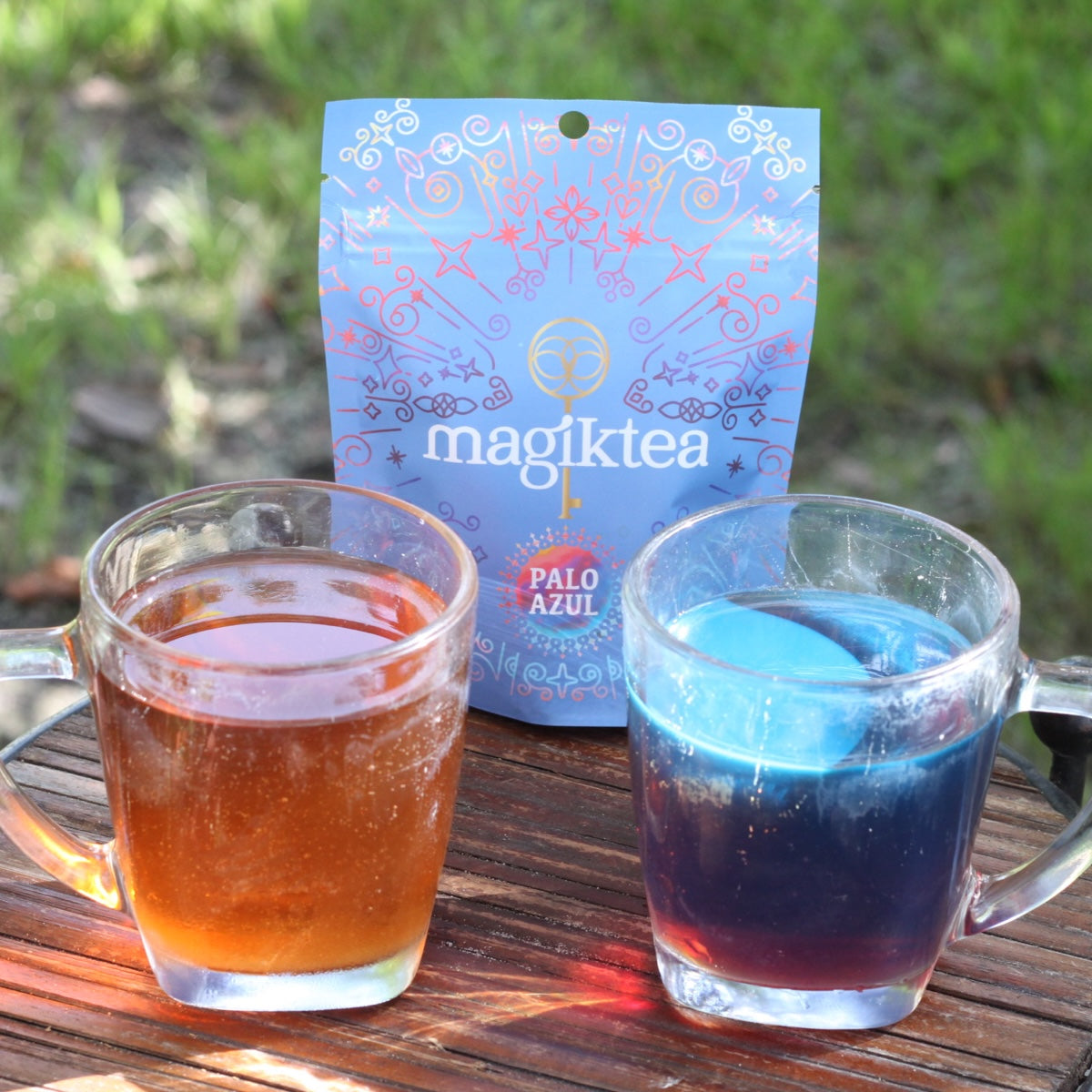
Greatly written and researched- Thank you for all your intensive hard work. Will shared with my nephews.